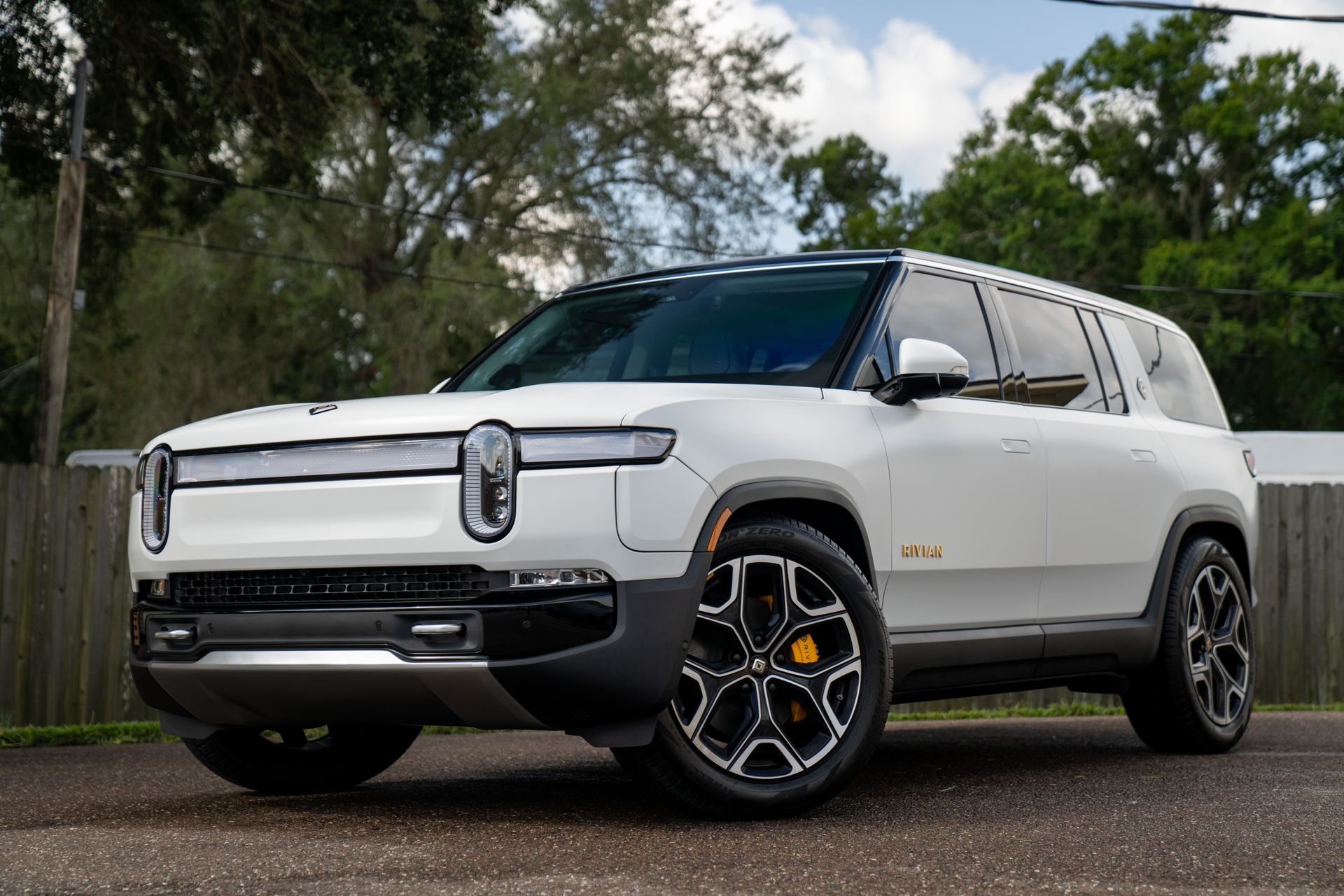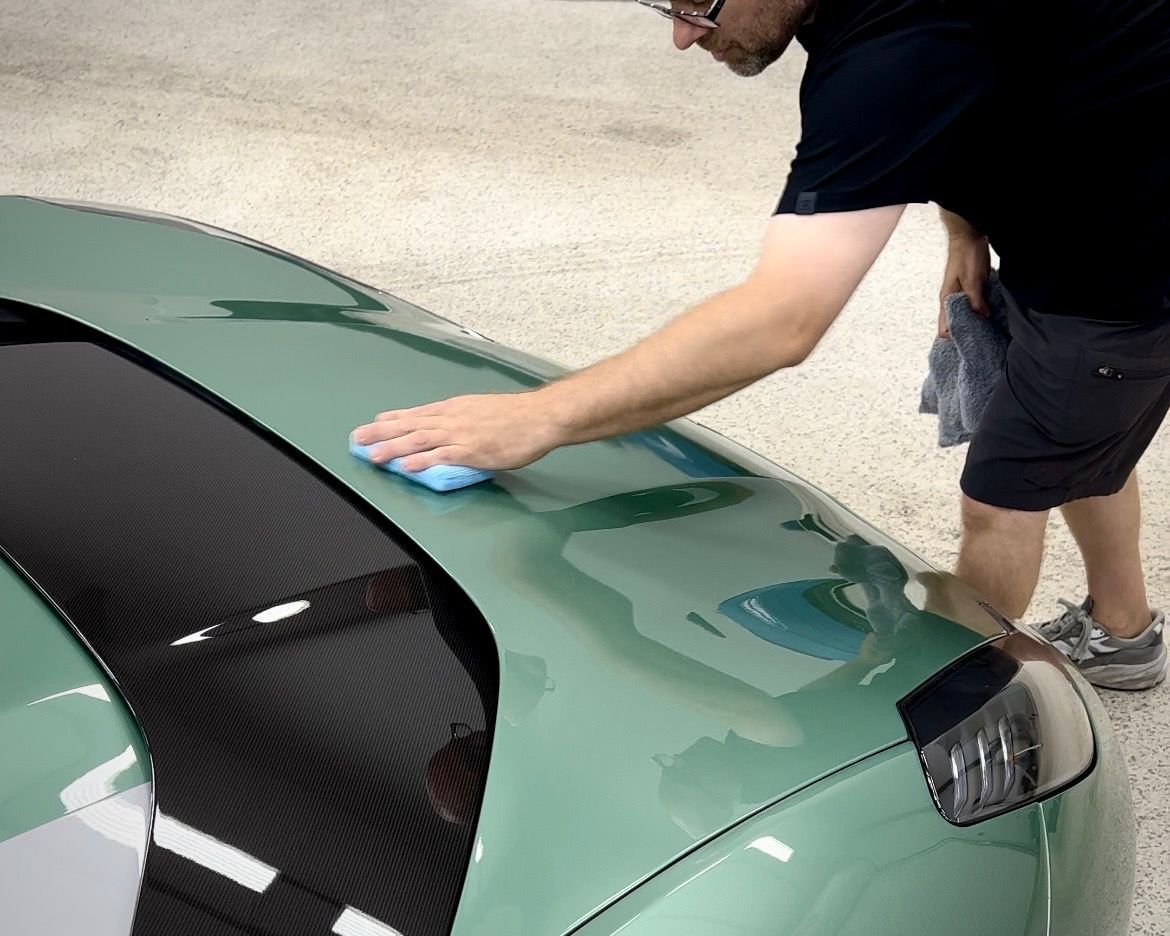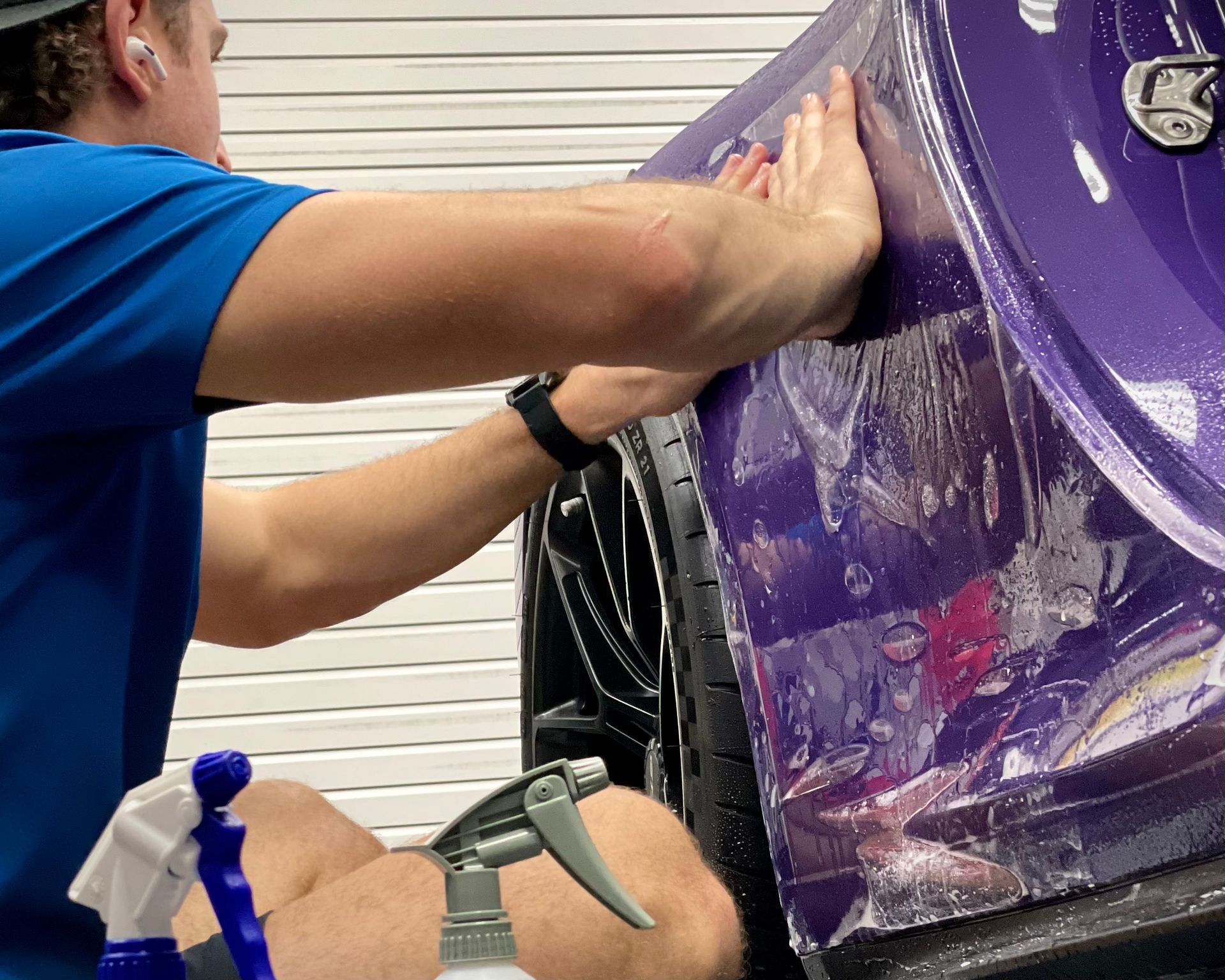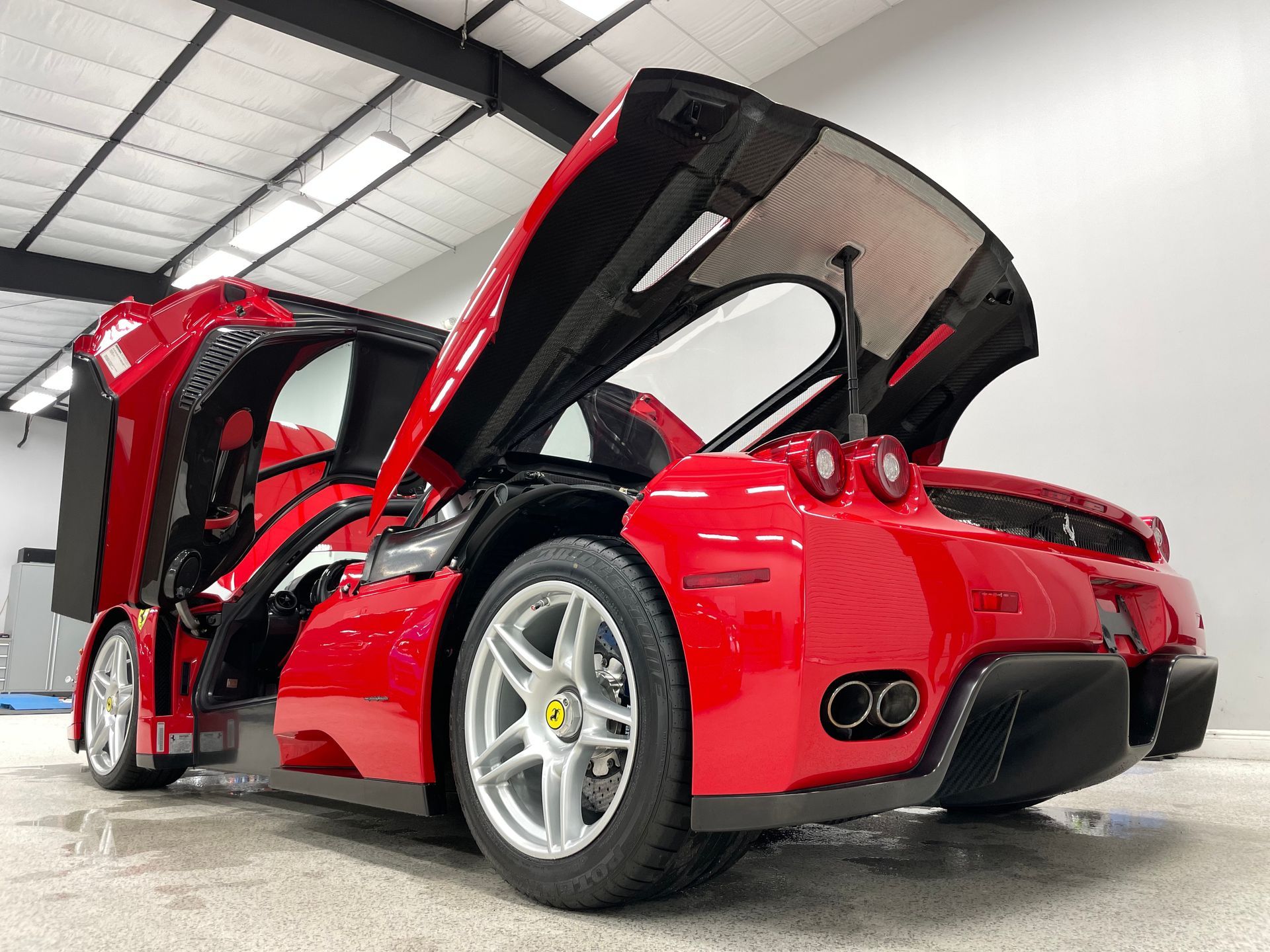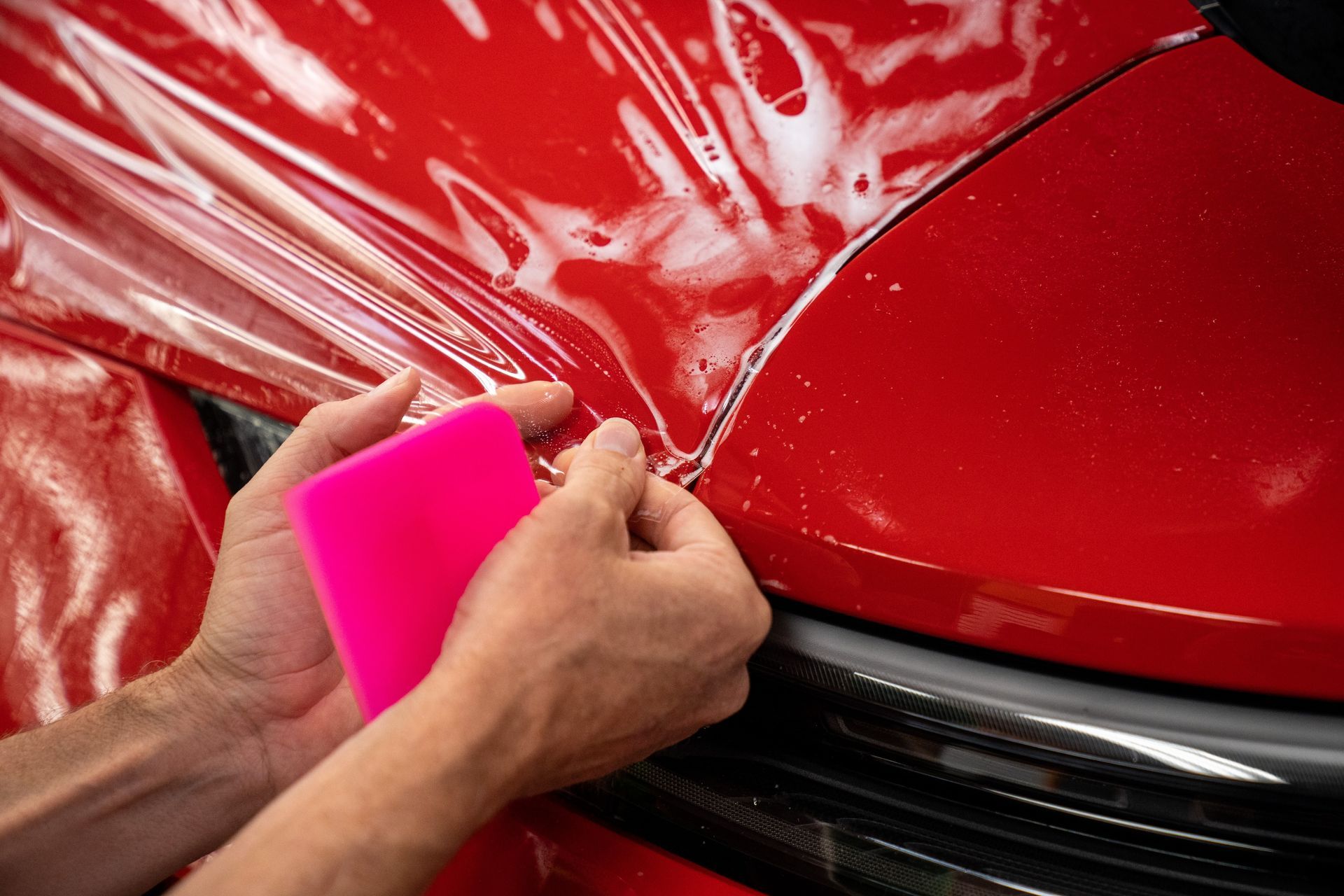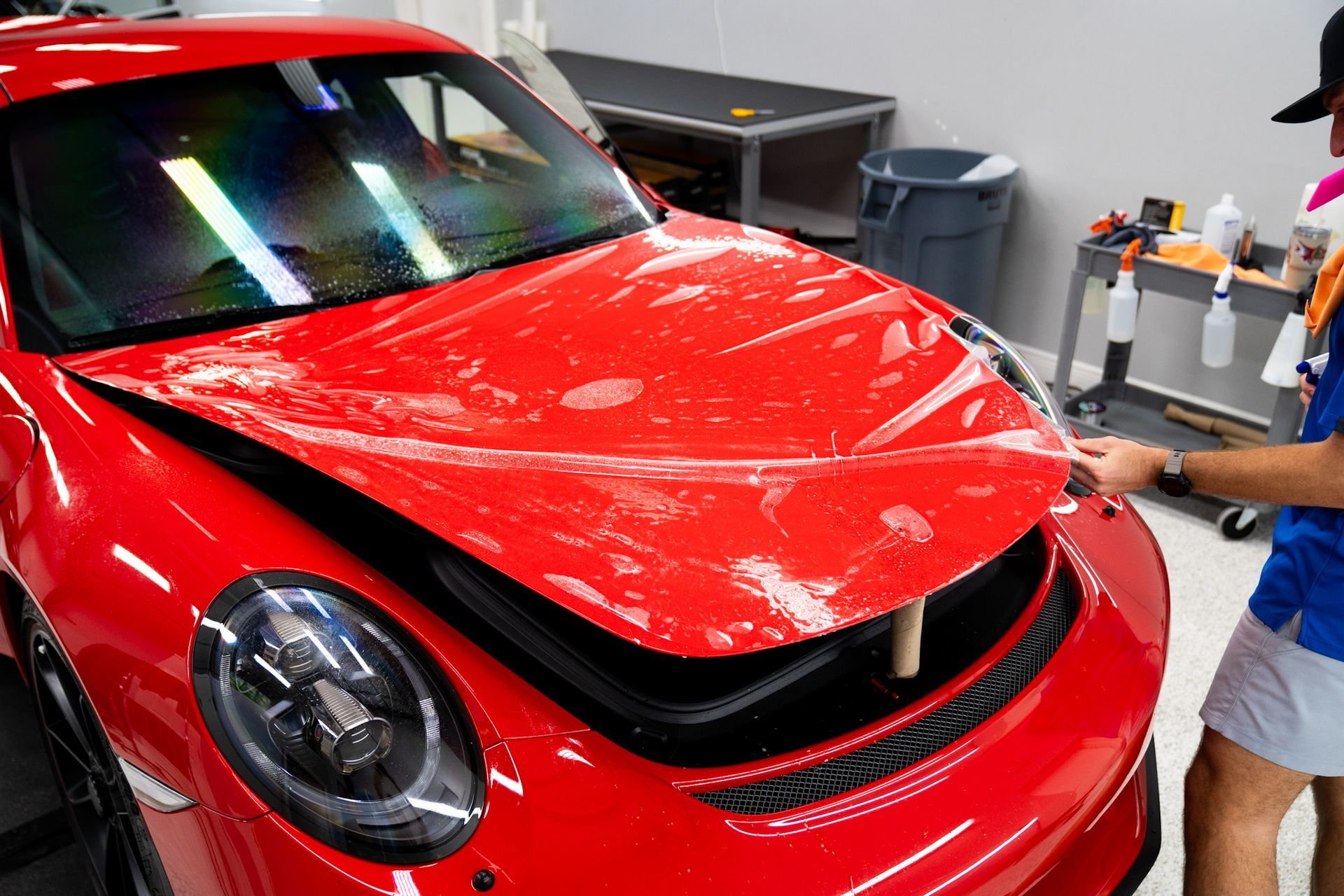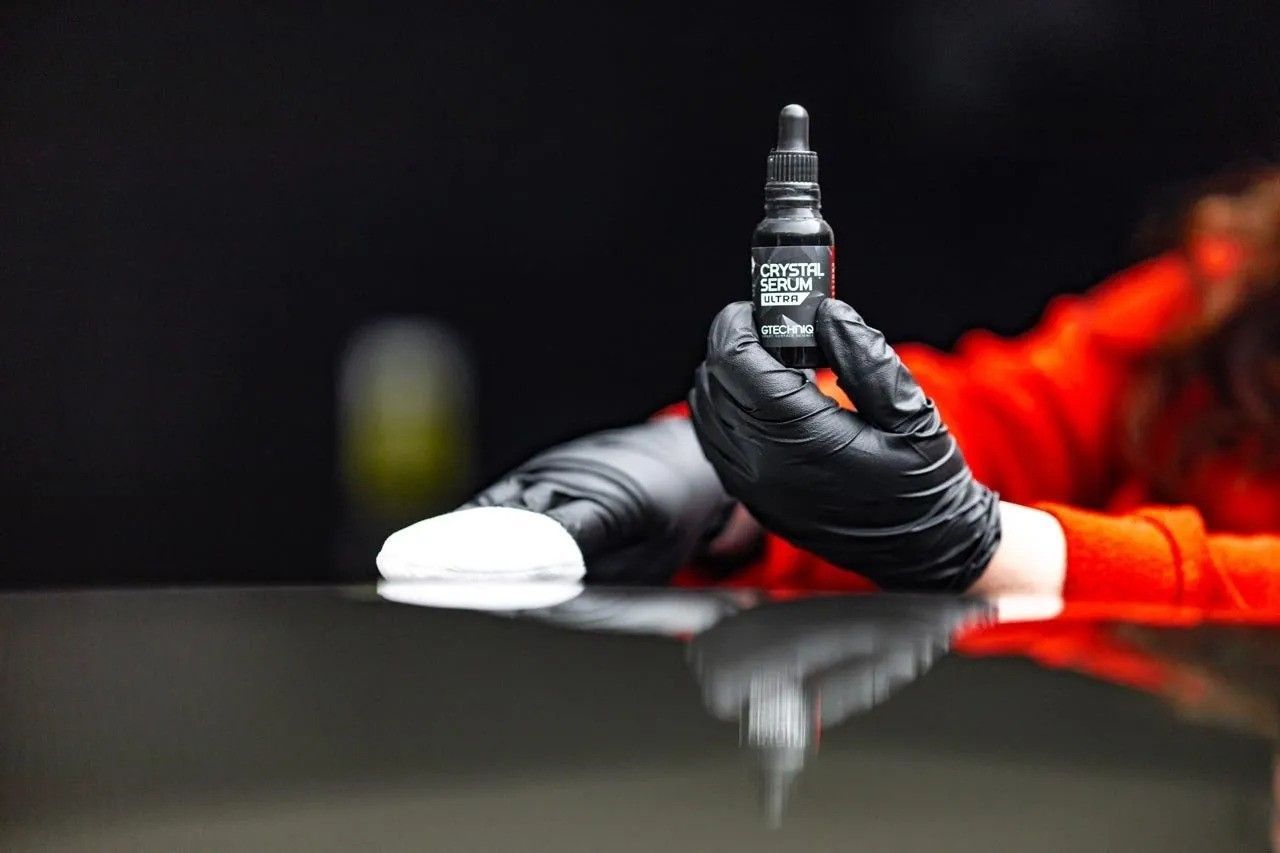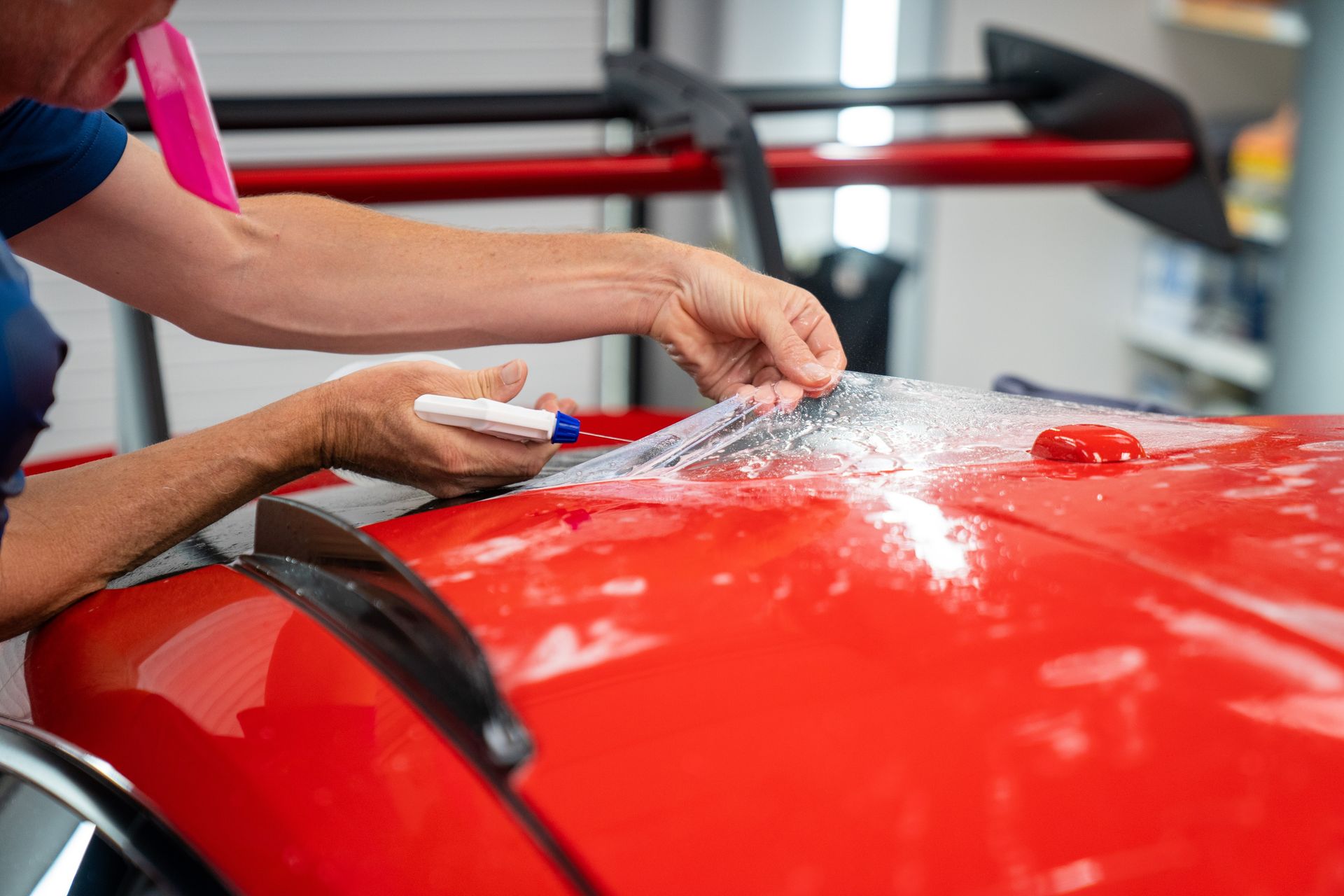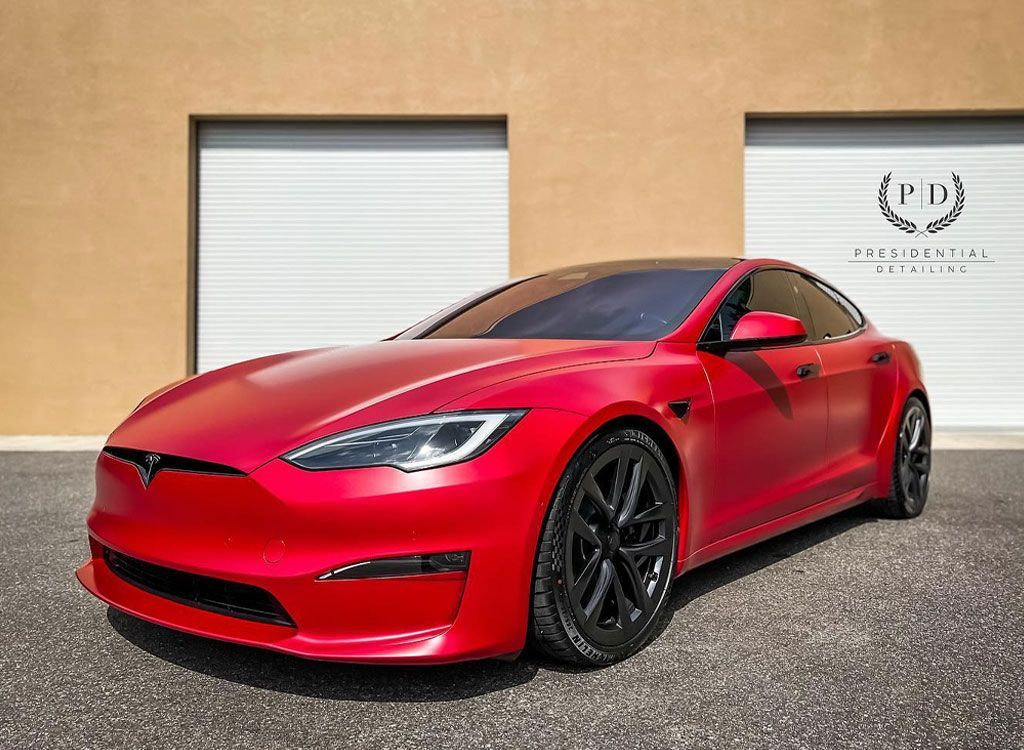Choose the Right Type of Professional Ceramic Coating: Options and Benefits
CALL (813) 723-9679
GET A FREE ESTIMATEFor anyone passionate about cars, maintaining that showroom shine is part of the joy. Unlike waxes that need frequent reapplications and hardly fend off environmental damage, professional ceramic coatings deliver unmatched longevity and protection. Did you know vehicles treated with ceramic coatings retain more luster over the years? This persistent beauty isn’t just about appearance; it translates into real-world benefits like fewer touch-ups and less time spent polishing.
To choose the right type of professional ceramic coating, consider factors such as your budget, desired durability, and specific environmental conditions your vehicle will face. Options include silica-based coatings for affordable and easier applications, ceramic polymer coatings for greater longevity and protection, and nanocoatings for the highest level of protection but may require careful application techniques.
Why Choose Ceramic Coating?
Choosing ceramic coating for your vehicle brings with it a wealth of benefits that transcend mere aesthetics. This advanced solution creates a robust protective layer that acts as a shield against environmental hazards such as UV rays, bird droppings, and road grime. Unlike traditional wax that may need reapplication every few months, ceramic coatings can last anywhere from two to five years, ensuring that your vehicle remains in optimal condition with minimal maintenance.
One of the most appealing aspects of ceramic coating is its hydrophobic properties. This means that water beads up and rolls off the surface, preventing grime and dirt accumulation. Picture driving through rain; instead of watching muddy streaks mark your paint, you'll find that your vehicle remains remarkably cleaner than cars without this protective coating. The ease of cleaning translates into less time spent with a hose or sponge and more time enjoying the open road. Studies indicate that vehicles treated with ceramic coatings can be cleaned 50% easier compared to their traditionally waxed counterparts. This ease of maintenance not only saves you time but also contributes to the longevity of your vehicle’s finish.
If you're still debating whether ceramic coating is worth it, think about long-term value rather than short-term price tag. When contemplating your decision, it’s crucial to recognize that investing in ceramic coating isn't just about protecting your vehicle—it's also about preserving its value. An aesthetically pleasing car stands out and retains higher resale value; thus, enhancing your vehicle’s appeal on the market becomes an added advantage of choosing ceramic coating. All these factors combined make this option compelling for any car owner looking to keep their vehicle looking pristine while safeguarding it over the years ahead.
Types of Ceramic Coatings
When it comes to ceramic coatings, the world is a rich tapestry of options designed to cater to diverse needs, priorities, and budgets. To make an informed choice, let’s explore the three main types: silica-based coatings, ceramic polymer coatings, and nanocoatings.
- Silica-based Coatings: Silica-based coatings are often your entry point into the realm of ceramic protection. They are appealing not only because they are affordable but also due to their relative ease of application. You don't need advanced skills or tools to apply these coatings; many car owners find themselves successfully doing this in their garages. However, it’s worth mentioning that with lower cost comes a trade-off—these coatings typically last about one to two years before needing reapplication. They provide a suitable initial defense against minor UV damage and environmental contaminants but require more frequent attention compared to other options.
- Ceramic Polymer Coatings: Stepping up in durability and protection, ceramic polymer coatings are formulated to offer a longer lifespan—around three to five years—and superior defense against harsh environmental elements. Not only do these coatings create a high gloss finish, enhancing the visual appeal of your vehicle's paint deep down, but they also shield against stains, dirt buildup, and harmful UV rays. Given their ability to withstand aggressive chemical exposure as well, they represent a great balance between performance and manageability for anyone looking to invest in their car's longevity without breaking the bank.
- Nanocoatings: For drivers who prioritize ultimate protection and aesthetics, nanocoatings stand out as the crème de la crème of ceramic finishes. Their remarkable strength comes from being exceptionally thin yet incredibly tough—a characteristic that allows them to effectively guard against environmental contaminants, road debris, and pollutants. With a potential lifespan extending up to seven years when applied properly, they promise unparalleled durability. However, achieving such results demands meticulous application by professionals familiar with the subtleties required for optimal adhesion. This level of precision makes them an investment worth considering if you desire top-tier ornamentation for your vehicle.
Understanding these distinctions will aid you in selecting a product that fits your budget while meeting specific expectations regarding durability and protection.
Benefits: Protection and Maintenance
Ceramic coatings are not just a luxury; they're an essential layer of protection for your vehicle.
Protection
The primary benefit is their ability to safeguard paint surfaces against a myriad of environmental threats. This includes UV rays that can lead to oxidation and fading, as well as pollutants like bird droppings and tree sap that can damage the finish. At the core of ceramic coatings is the hydrophobic layer they create, which effectively repels water. This hydrophobic nature keeps your car looking fresh and drastically reduces the risk of annoying water spots and swirl marks that often plague untreated surfaces.
Beyond reducing scratches, these coatings act as a barrier against harmful chemicals that may come into contact with your vehicle. Whether it’s road salt during winter or acid rain in certain areas, ceramic coatings provide a formidable shield. Notably, professional-grade products have been shown to block 99% of harmful UV rays—preventing fading and keeping your car's paint vibrant for much longer.
Ease of Maintenance
On top of offering robust protection, ceramic coatings excel at simplifying maintenance routines. One standout feature is that dust, dirt, and even pesky bird droppings are much less likely to stick to coated surfaces. Routine washing becomes not just easier but less frequent too. Instead of washing your car every week, you might find yourself doing it once every three weeks or more!
The ease doesn't stop there; even stubborn grime tends to slide off more readily due to the smooth surface created by these coatings. Many users report spending half the time they used to on car cleaning duties after making the switch.
Application Process Explained
The application process for ceramic coatings is of utmost importance because it directly influences how well the coating bonds to the surface and performs over time. Each phase requires careful attention to detail, starting with
- Surface Preparation: This initial phase cannot be overstated; the surface must be meticulously cleaned to eliminate any contaminants like dirt, oils, or dust. A simple wash may not suffice; using a clay bar helps to lift embedded particles that could interfere with adhesion. If the paint has minor imperfections—such as scratches or swirl marks—it may be wise to use a machine polisher. This prepares a flawless canvas that allows the ceramic coating to achieve maximum durability. Once the surface is primed and ready, we move to the next stage of application.
- Applying the Coating: At this point, it's time to apply the actual ceramic coating. This process involves applying small sections at a time—usually about two feet by two feet. Using a specialized applicator pad designed for ceramic coatings ensures an even distribution of product. It’s vital to maintain precision during this phase; even the smallest misstep can result in uneven coverage or insufficient bonding. As you work through your vehicle, remember to use a cross-hatch pattern; this technique helps guarantee thorough coverage while preventing missed spots.
- Curing Time: During curing time, which can span anywhere from several hours to a few days depending on the specific product used, it is crucial not to rush this step. Curing transforms the liquid coating into a solid protective layer that successfully bonds with the surface beneath it. This stage is essential not just for achieving hardness but also for contributing to the coating's longevity and effectiveness against various environmental factors such as UV rays and chemicals. Protecting your freshly coated surface during this period means avoiding water contact and harsh environments, allowing your vehicle to bask in its newly applied shield undisturbed.
Understanding these stages gives insight into whether you're up for the DIY challenge or whether your best option is professional help. The complexities involved in proper application highlight just how critical each step is in obtaining optimal results from your ceramic coating investment.
Choosing the Right Coating for Your Needs
Selecting the appropriate ceramic coating entails a thoughtful evaluation of your individual preferences. This isn’t a one-size-fits-all situation; every vehicle has its own character and need for protection. The first thing to consider is your budget. Although it's tempting to go for the most advanced options, setting a realistic budget will help you narrow down the choices. For instance, while nanocoatings offer exceptional durability and shine, they also come with a higher price tag that may not be justified for every vehicle or owner.
Next, think about your vehicle type. If you're the proud owner of a luxury car, investing in a more robust coating seems like a wise strategy to safeguard your investment's aesthetics and value over time. A high-end coating can add significant value by maintaining that showroom finish while enhancing resale potential. On the other hand, for standard vehicles, less expensive silica-based or ceramic polymer coatings can provide satisfactory protection without breaking the bank.
Additionally, evaluating your usage patterns plays a pivotal role in this decision-making process. Are you commuting daily or only taking the car out on weekends? If your vehicle sees heavy use, options like ceramic polymer coatings offer an attractive balance between cost and durability. They resist wear and tear effectively without daunting prices. However, if you own a weekend car or show vehicle where aesthetics are paramount, then considering nanocoatings may prove beneficial even at their premium pricing; the superior protective properties can maintain that exclusive look over time.
These considerations—budgeting wisely, assessing your vehicle type, and understanding usage patterns—will guide you toward choosing the right ceramic coating tailored specifically for your needs.
Professional Coating Services
When it comes to ceramic coatings, professional services stand out for their comprehensive approach and detailed execution. One major advantage is that certified professionals possess specialized tools designed specifically for applying coatings with precision. For instance, they have access to advanced techniques like paint correction that ensure the surface is flawless before any application begins. This meticulous preparation makes a significant difference in the final result. After all, the smoother the surface, the better the adhesion and overall performance of the coating.
Professionals typically use products that are of higher quality and more durable than those found in retail kits. Many of these products are only available through certified dealers, which means you won’t have access to them as a DIY enthusiast. Such high-grade coatings not only enhance your vehicle's appearance but also offer long-lasting protection against scratches, UV rays, and other environmental factors. The expert knowledge behind these applications can optimize the longevity of your investment. While some might argue that DIY options save money in the short run, it’s important to consider the potential costs of mistakes made during application. A poorly applied coating can lead to streaked surfaces and uneven coverage, which may necessitate costly rework or a reduction in coating effectiveness over time.
Another key aspect of opting for professional services is the warranty that often accompanies their work. Certified installers provide warranties that assure you of product durability and satisfaction over an extended period—sometimes lasting years. This guarantee not only protects your investment but also gives peace of mind that if anything goes wrong down the line, you’re covered. Ultimately, weighing these considerations can help guide your decision about whether to go with a professional service or attempt a DIY approach when choosing ceramic coatings for your vehicle.
In making this choice, understanding the benefits of professional services can significantly enhance both your vehicle's appearance and its protection against environmental elements.
Reliable Ceramic Coating Service in Sarasota, FL
Protect and preserve your vehicle’s shine with Presidential Automotive Detailing’s
reliable ceramic coating service in Sarasota, FL. Our ceramic coatings provide long-lasting defense against UV rays, dirt, and environmental contaminants while giving your car a sleek, high-gloss finish. With expert application and premium products, you’ll enjoy a durable layer of protection that makes cleaning easier and keeps your car looking like new. Contact Presidential Automotive Detailing today to schedule your ceramic coating service and experience the benefits of top-notch paint protection. Call us at (813) 723-9679 to get started!

